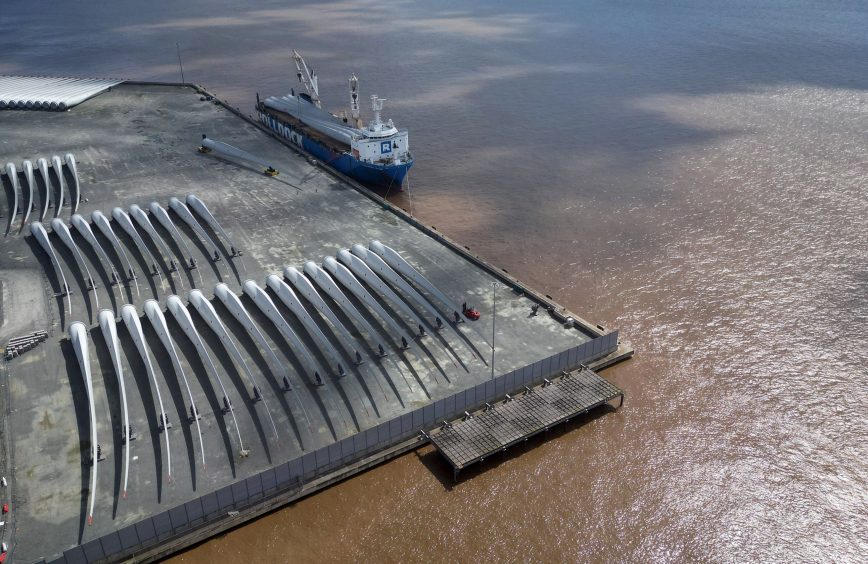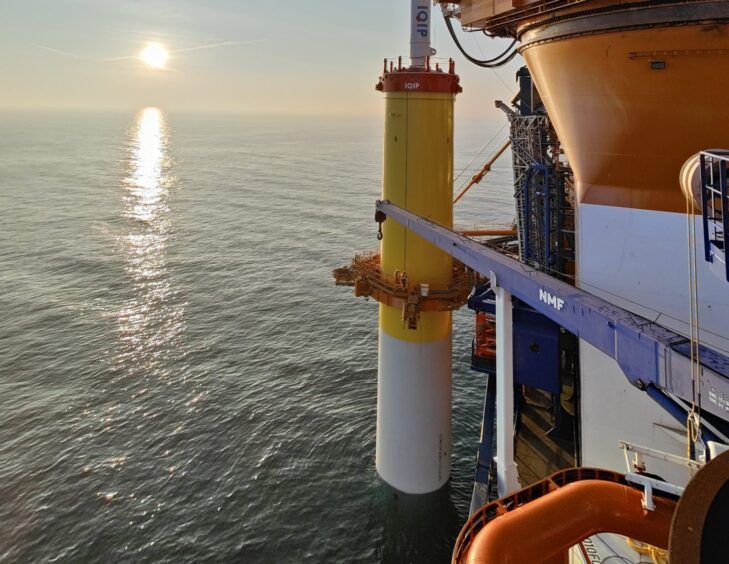
Siemens Energy will start producing recyclable wind turbine blades at its factory in Hull this spring, a spokesperson has confirmed.
“Our Hull blade manufacturing facility has been open since 2016, but will start manufacturing recyclable blades this spring,” the spokesperson said.
The blade factory in Hull was launched in 2016, becoming the largest offshore wind turbine manufacturing facility in the UK.
Joint venture Siemens Gamesa announced it had invested £186 million in the Hull factory in 2021 to develop next-generation offshore wind turbines, more than doubling the size of the facility.
This investment included a grant from the £160m government’s offshore wind manufacturing investment support scheme.
That investment was expected to double the size of the plant to 77,600 square metres, creating an additional 200 jobs and bringing the total number of jobs at the facility up to 1,200.
According to Siemens Gamesa, more than 2,000 wind turbine blades have been built at the facility in Hull.
The company said the launch of its recyclable wind turbine blade manufacturing capability will enable the industry to separate and recycle blade materials for new applications for the first time.
RecyclableBlade forms part of its goal to reach 100% ‘recyclability’ of its turbines.
These turbines will be used for the first time in the UK in the 1.4GW Sofia offshore wind farm being developed with developer RWE at Dogger Bank, the spokesperson said.
The offshore wind project secured a contract-for-difference in 2019 at the UK government auction and reached a final investment decision in March 2021. Construction started in 2023 at the 100 turbine-strong offshore wind site.
According to the company, 85% of a wind turbine’s materials are already recyclable, but it has been “inherently difficult” to recycle wind blades in a cost-efficient way.
As a result, most wind turbines have been disposed of in landfill after reaching the end of their usable lives.
It estimates that 10% of all fibre-reinforced (FRP) composite waste in Europe results from wind turbine blades.
Several countries in Europe have banned the use of fibre-reinforced composites in landfill.
The European Commission has introduced legislation to enable member states to end composites in landfill in a move towards recycling of composite materials.
Siemens Energy relaunched its 4.X onshore wind turbine in September following reports of defects in 2023, after quickly ramping up the size of its turbines.
Sales of the more recent 5.X turbine model were also suspended but are expected to resume in 2025, according to a person familiar with the matter.
Wind turbine blades are cast using glass and carbon fibre, a core material such as wood or polyethylene terephthalate foam (PTE) and resin.
These components bind together once the resin is cured, presenting a challenge in separating the resin from the other materials to recycle the blades.
Siemens Gamesa’s RecyclableBlade is made in the same way as a regular turbine, using the same manufacturing process, but uses a new type of resin that can be separated from the other components more easily to recycle the blade, according to the company.
Blades can be dismantled from the turbine, immersed in heated acidic solution to separate the resin from fibreglass, plastic, wood and metal, and allow the materials to be recovered and dried.
Those materials can then be used in new products in the automotive industry, or in consumer goods such as flat-screen casings, it added.
Some countries have introduced requirements for recycling entire wind turbines including blades. China proposed the first standards for turbine recycling in 2024.
In 2021, WindEurope called for a landfill ban on decommissioned turbine blades across Europe by 2025.The Re-wind Network is one organisation in the UK working towards dismantling and repurposing used wind turbine blades and components.
Danish start-up Continuum ploughed DKK 600m (£70m) into developing a wind turbine recycling facility at the Port of Esbjerg in 2023, with plans for a recycling hub in Scotland.
Siemens Gamesa estimates that if all new projects globally used the new recyclable blades through to 2050, a total of 2.12 million blades could be recycled and avoid landfill.

 © Supplied by RWE
© Supplied by RWE